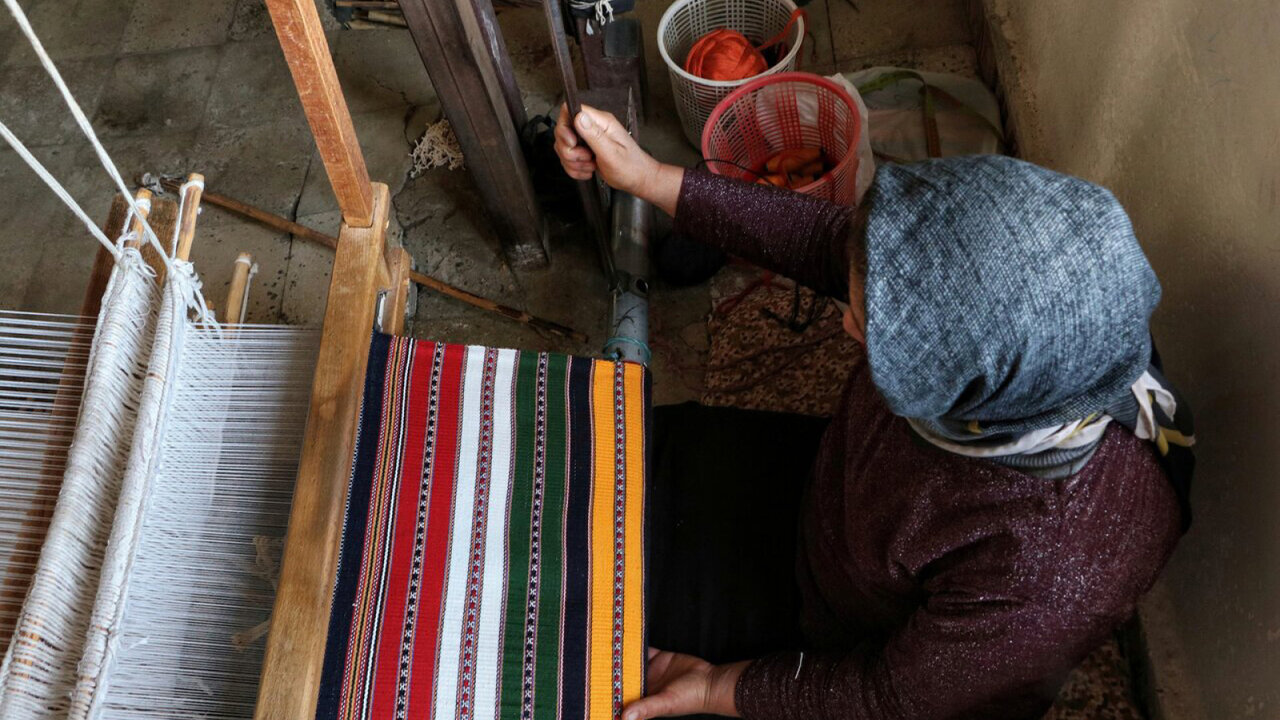Pelas Bafi: a glimpse into traditional weaving artistry

TEHRAN - Pelas Bafi has been practiced for centuries across Iran and in particular within North Khorasan province.
Pelas, a type of woolen kelim carpet, serves as a versatile floor covering designed to protect against the humidity, cold, and heat of the ground.
According to Visit Iran, this ancient craft continues to thrive among the region's rural and nomadic communities, where Pelas is an essential part of daily life and cultural heritage.
Pelas is made by weaving colorful twisted wool yarns into horizontal strips that form the fabric's background. The weaving process starts with setting up the loom by stretching the warps, similar to techniques used in carpet and Kelim making. Colorful wool wefts are then passed through the warps, creating horizontal lines that are distinct to Pelas.
Unlike other woven items like Jajims, where the stripes are vertical, the stripes in Pelas are always horizontal, adding to its unique appearance.
Pelas is used for various purposes, including prayer rugs, bridal tablecloths, and floor coverings. It is especially valued by the nomadic tribes of North Khorasan, who often set up their tents on damp and unprepared ground. The thick, woolen fabric of Pelas provides excellent insulation, protecting against the elements and offering a durable, practical solution for covering the floors of their tents and rural homes.
The weaving technique known as “Pichbafi” is used in North Khorasan, which involves passing the wefts from both the front and back of the warps, giving Pelas an embossed appearance. The weavers, often women from nomadic families, use wool from their own sheep to spin the yarns. They dye the yarns using natural colors, prepare the loom based on the desired size of the product, and weave Pelas along with other items like rugs.
The process of weaving begins with the stretching of yarns onto the loom using the Persian or “Zarb Dari” (cross) style. To prevent the loosening of the warps, clay or a paste made of flour and water is applied to the top and bottom of the loom. This simple yet effective technique ensures the stability of the weave and maintains the integrity of the Pelas even if a warp thread is accidentally cut.
While Pelas Bafi is practiced in other parts of Iran, the distinctive method and designs of North Khorasan make it unique. The weavers’ skill and the vibrant, earthy designs of Pelas are a testament to the region’s rich cultural heritage. Despite modernization, this traditional craft remains an integral part of the community’s lifestyle, preserving an art form that connects the present with the past.
Pelas Bafi not only reflects the creativity and resilience of the weavers but also stands as a symbol of the enduring cultural traditions of North Khorasan, where ancient practices continue to shape everyday life.
AM
Leave a Comment